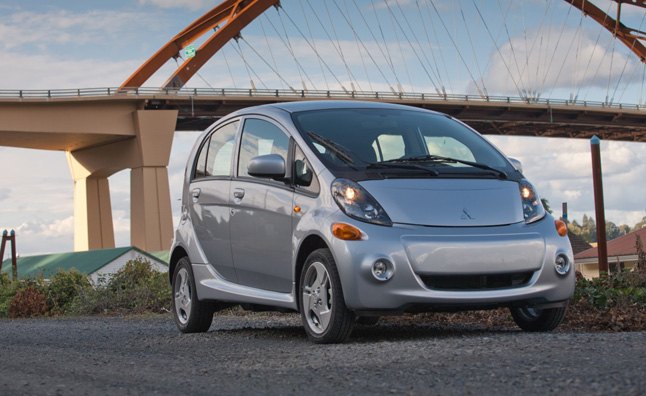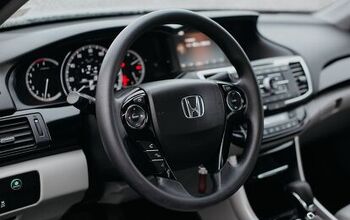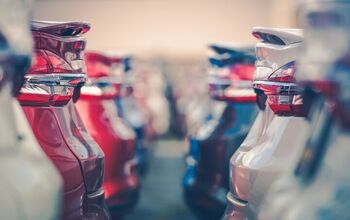What Are the Best and Worst Vehicles to See Out Of?

It’s not a common aspect some car shoppers pay attention to or look for, but poor visibility in a vehicle can directly affect how safe a vehicle is to drive.
So which vehicles in today’s market has the best visibility and which vehicles have the worst? Consumer Reports judged the vehicles available in today’s marketplace to determine how well drivers of different sizes can see forward, to the rear, to the sides and while using inside and outside mirrors. The result is a list of six vehicles with the best visibility and four with poor visibility.
The Subaru Forester isn’t only functional, but is easy to see out of. Large windows and thin roof pillars aid in giving outstanding visibility along with large side mirrors. Additionally, all Forester models above the base level come with a rear-view camera. But one of the best features Subaru offers is its EyeSight Driver Assist technology, which uses two cameras mounted by the rear-view mirror to monitor traffic, alerting the driver with sounds and visuals when it senses the danger of a collision.
The Chevrolet Cruze’s sleek styling doesn’t just help make the sedan look good, but gives it large windows all around that helps increase visibility. The roof pillars are moderately wide which results in an expansive view around corners. Though it’s not standard, a rear-view camera is included in the Driver Convenience Package on the 2LT and diesel models for $380 that works well, and is well worth the investment.
It might not look it, but the Mitsubishi i-MiEV actually offers great visibility for its drivers. According to Consumer Reports, it’s “like sitting in a fishbowl,” with large front and side windows. Despite the windshield pillars being wide, the inset sail windows help the view in the corners. The i-MiEV’s only negative are the large rear head restraints that block rear visibility, but the car’s rear-view camera helps in that aspect.
Being one of the best-selling cars for decades doesn’t happen by accident. The Honda Accord may have a stylish, sleek design but the Japanese automaker hasn’t disregarded the importance of good visibility. Thin roof pillars and a low beltline gives the Accord a wide expanse of glass all around and all trim models come with a standard rear-view camera. Those opting for the higher-end models (EX-L and up) will also benefit from the ability to change the viewing angle on the backup camera display.
The Nissan Altima has a high rear deck that limits visibility out the back, but that’s typical for many sedan models. The rear roof pillars also create a blind spot for the driver, but the small quarter windows help. Overall, visibility is good on the Altima thanks to large windows all around and moderately-sized front pillars. A rear-view camera is available on the 3.5 SL model, but isn’t on the 2.5 S and lower trims. That will change soon because of the U.S. government mandate that requires all new vehicles to include the cameras by 2015.
The Subaru Outback joins the Forester as a vehicle with great visibility. Just one glance at the crossover and you can tell its large windows, low sills, big mirrors and roof pillars aren’t too wide. The large backup camera is standard with the navigation system, which is a huge plus for the functional and versatile wagon. And again, EyeSight is available to further enhance your safety while driving, an indirect benefit to visibility.
The Toyota FJ Cruiser isn’t long for this world as its production will be ending after this year. It’s also one of the worst vehicles to see out of. Wide rear roof pillars along with a rear-mounted spare limit outward visibility on the model with large blind zones that becomes troublesome when backing up or changing lanes. But we’re guessing if you’re considering an FJ Cruiser, poor visibility won’t change your mind, especially because they won’t be available after 2014.
Nissan‘s sleek sports car has a lot of great things going for it, but good sightlines aren’ta part of that list. Despite having large side mirrors, the coupe could really benefit from a form of blind-spot detection. Poor visibility to the rear quarters and straight back are a result of the Z’s sleek, sloping design. Even the view straight ahead is just average. A rear-view camera is available as an option however.
Look, when you’re designing an luxury, performance roadster like the Porsche Boxster, compromises have to be made. For the German automaker, it might be form over function as the low seating position, high dashboard and rear deck makes rear visibility on the Boxster poor, especially for smaller drivers. Visibility up front is adequate thanks to thin front pillars and good sized windows, but the sides of the fabric top create large blind spots when it’s up. Even with the top down, the screened wind blocker, high rear trunk deck and roll hoops make it difficult to view out the rear.
Its styling and aesthetics may be appealing, but visibility on the Chevrolet Camaro is poor. Short windows, a long bulging hood and thick roof pillars all hamper visibility for the Camaro’s driver while the rear-view mirror blocks a portion of the windshield. In addition, a low roofline limits the view to the sides and a high rear deck obstructs rear visibility. It is highly recommended to get a rear-view camera with the vehicle – in fact, it’s a necessity.

Jason Siu began his career in automotive journalism in 2003 with Modified Magazine, a property previously held by VerticalScope. As the West Coast Editor, he played a pivotal role while also extending his expertise to Modified Luxury & Exotics and Modified Mustangs. Beyond his editorial work, Jason authored two notable Cartech books. His tenure at AutoGuide.com saw him immersed in the daily news cycle, yet his passion for hands-on evaluation led him to focus on testing and product reviews, offering well-rounded recommendations to AutoGuide readers. Currently, as the Content Director for VerticalScope, Jason spearheads the content strategy for an array of online publications, a role that has him at the helm of ensuring quality and consistency across the board.
More by Jason Siu









































Comments
Join the conversation
why is brz (Subaru) missing? brz has excellent visibility. no rear seat whiplash head rests to impede your view.
Nissan xterra